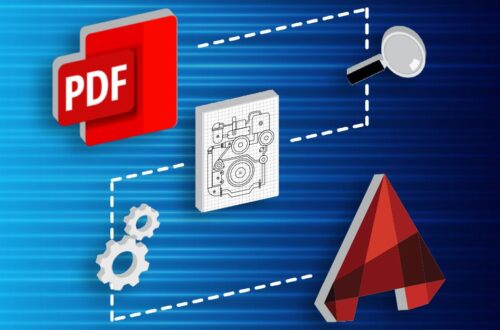
CAD to IGES file format conversion
The importance of CAD to IGES file format conversion cannot be overstated. This article unravels the intricacies of this process, providing a comprehensive guide for designers seeking precision and efficiency.
CAD to IGES File Format Conversion Explained
CAD to IGES file format conversion stands as a crucial bridge in the design realm. This section delves into the fundamental aspects, elucidating its significance and impact on modern design processes.
The Essence of CAD to IGES
Streamlining Interoperability for Enhanced Collaboration
In the dynamic realm of design, collaboration is key. CAD to IGES conversion breaks down barriers, fostering seamless communication between different design software. This ensures a smooth transfer of intricate designs, reducing compatibility issues and enhancing collaborative efforts.
Precision Unleashed: Understanding IGES
Delving deeper into IGES, or Initial Graphics Exchange Specification, reveals its role as a neutral file format. This neutrality allows for the transfer of 3D and 2D design data between various CAD systems. Unleash precision in design as IGES becomes the universal language of seamless data exchange.
Navigating the Conversion Process
Navigate the conversion process with confidence. This subheading provides a step-by-step guide, ensuring a seamless transition from CAD to IGES. From file preparation to post-conversion validation, every stage is meticulously detailed, empowering designers to master the art of smooth transformation.
Optimizing Design Workflows: Best Practices for CAD to IGES Conversion
Explore best practices to elevate your design workflows, ensuring optimal results in CAD to IGES file format conversion.
Choosing the Right Conversion Tool
Selecting the appropriate conversion tool is a pivotal decision in the CAD to IGES file format conversion process. The market offers a plethora of tools, each with its unique features and capabilities. One key consideration is accuracy; the chosen tool must ensure precision in translating CAD designs into IGES files. Compatibility is equally crucial, as the tool should seamlessly integrate with the specific CAD software being utilized. User-friendliness is another factor to weigh, as an intuitive interface streamlines the conversion process, making it accessible to users with varying levels of expertise. Additionally, the tool’s ability to handle complex geometries ensures that intricate designs are faithfully represented in the converted IGES files. As designers navigate the landscape of available tools, it’s imperative to prioritize these factors to guarantee a smooth and successful CAD to IGES conversion experience.
Common Challenges and Solutions
Users often encounter common challenges that can potentially impede the seamless transition of design data. Understanding these challenges and having effective solutions at hand is paramount for a successful conversion process.
| Challenges | Solutions | Preventive Measures |
| Geometry Errors | Utilize specialized tools for error detection and repair. | Conduct thorough pre-conversion checks to identify potential issues. |
| Data Loss Prevention | Regularly back up CAD files before initiating conversion. | Implement a robust file backup protocol to mitigate data loss risks. |
| Compatibility Issues | Choose a conversion tool that ensures compatibility. | Verify software compatibility before embarking on the conversion. |
| Complex Geometry Handling | Opt for tools with advanced capabilities in handling intricate designs. | Simplify CAD designs when possible to minimize complexity. |
| File Preparation Challenges | Follow best practices for file preparation. | Provide clear guidelines to users on proper file preparation steps. |
Benefits Beyond Compatibility
While the primary objective of CAD to IGES file format conversion is to enhance compatibility and facilitate seamless data exchange between different CAD systems, the advantages extend far beyond mere interoperability. Embracing IGES as the universal language for design data brings forth a myriad of hidden benefits that can significantly elevate the design process.
One notable advantage lies in enhanced data preservation. IGES files act as a robust repository, preserving intricate details and geometric nuances of designs. This not only ensures the integrity of the original design but also provides a safeguard against potential data loss during the conversion process.
Furthermore, IGES files future-proof designs. In an era of evolving software and technological advancements, relying on a universal format like IGES ensures that designs remain accessible and relevant over time. This longevity is particularly crucial in industries where projects span extended durations, offering a reliable solution to mitigate compatibility concerns as software evolves.
Moreover, IGES files promote collaboration on a broader scale. Beyond compatibility between different CAD systems, the universal nature of IGES encourages collaboration across disciplines and industries. Designers can seamlessly share and collaborate on projects, transcending software-specific barriers and fostering a more interconnected design community.
Real-world Applications
Explore real-world applications where CAD to IGES conversion has made a significant impact. From aerospace engineering to product design, discover how this process has revolutionized workflows across diverse industries.
Future Trends and Innovations
Stay ahead of the curve by delving into anticipated trends and innovations in CAD to IGES conversion. From machine learning advancements to enhanced file compression, get a glimpse of the future shaping the design landscape.
FAQs: Unveiling Clarity
Uncover answers to commonly asked questions about CAD to IGES file format conversion.
1. What is CAD to IGES file format conversion?
CAD to IGES file format conversion is the process of transforming Computer-Aided Design (CAD) files into Initial Graphics Exchange Specification (IGES) files. This enables seamless data exchange between different CAD systems, fostering collaboration and interoperability.
2. Why is IGES considered a universal file format?
IGES is considered a universal file format because it serves as a neutral intermediary, allowing the transfer of design data between various CAD systems. Its neutrality eliminates compatibility issues, making it a preferred choice for seamless data exchange.
3. How does CAD to IGES conversion enhance collaboration?
CAD to IGES conversion enhances collaboration by breaking down compatibility barriers between different design software. It facilitates smooth data exchange, allowing designers using different CAD systems to work together seamlessly on a project.
4. What are the key features to consider when choosing a CAD to IGES conversion tool?
When selecting a CAD to IGES conversion tool, consider features such as accuracy, compatibility with your design software, user-friendliness, and the ability to handle complex geometries. Choosing the right tool is crucial for a successful conversion process.
5. Can CAD to IGES conversion lead to data loss?
While CAD to IGES conversion is designed to be accurate, there may be instances of data loss, especially if the original CAD file contains complex or proprietary elements. It’s essential to carefully validate the converted IGES file to ensure data integrity.
6. How can designers troubleshoot common issues during CAD to IGES conversion?
Designers can troubleshoot common issues during CAD to IGES conversion by addressing geometry errors, ensuring proper file preparation, and validating the converted file. Understanding potential challenges and having solutions at hand ensures a smoother conversion process.





